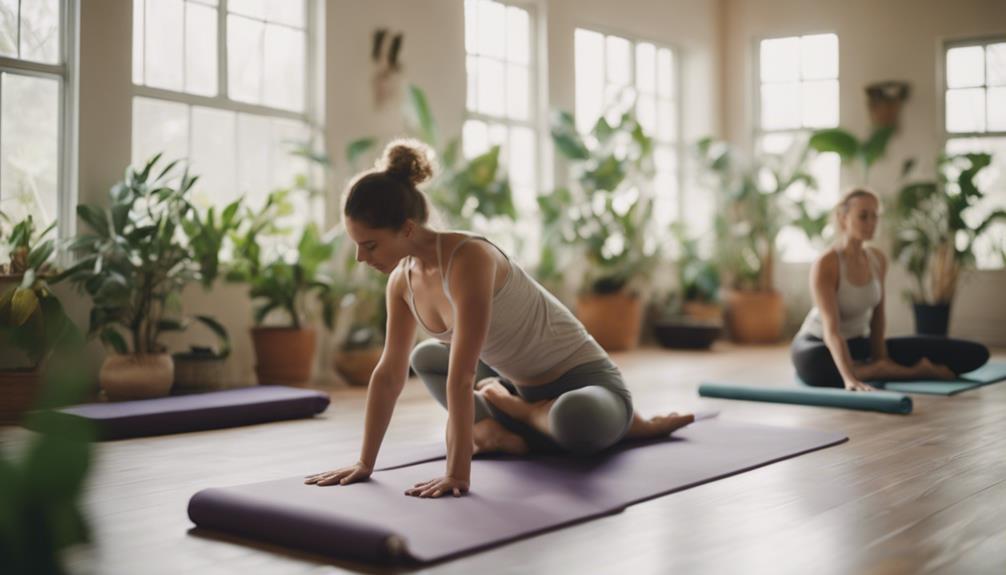Do You Need A Yoga Mat For Pilates

When it comes to Pilates, many practitioners often wonder, “Do you need a yoga mat for Pilates?” This question is common among beginners and even seasoned Pilates enthusiasts alike. In this blog post, we will delve into the importance of a yoga mat in Pilates practice, the differences between yoga and Pilates mats, and offer some useful tips for choosing the right mat for your workouts.
Understanding the Basics of Pilates
Pilates is a low-impact exercise method focusing on core strength, flexibility, and overall body awareness. Developed by Joseph Pilates in the early 20th century, this practice has gained immense popularity for its ability to improve posture, balance, and muscular endurance. While some Pilates sessions are conducted on specialized equipment like reformers, many classes are held on a mat. This leads to the question: do you need a yoga mat for Pilates? The answer isn’t as straightforward as it seems, as it largely depends on your personal preferences and the type of class you are attending.
The Role of a Yoga Mat in Pilates Practice
A yoga mat serves several purposes during Pilates practice. Firstly, it provides a cushioned surface that offers comfort while performing various exercises. Without a mat, certain exercises—especially those that require lying on your back or side—can be uncomfortable on hard surfaces. Additionally, a yoga mat can help prevent slipping, allowing for safer and more effective movements. The grip provided by a mat is essential, especially during dynamic exercises where stability and control are crucial.
Differences Between Yoga Mats and Pilates Mats
While both yoga and Pilates mats serve similar functions, there are essential differences between the two. Yoga mats tend to be thinner and made from materials that provide a good grip for standing poses and transitions. On the other hand, Pilates mats are generally thicker and offer more cushioning to support the spine during various floor exercises. Choosing the right type of mat can significantly impact your comfort and performance during Pilates sessions. If you’re serious about your practice, investing in a good-quality Pilates mat can enhance your experience.
Related Posts:
Do You Need a Mat for Pilates Classes?
If you’re attending a Pilates class, the requirement for a mat may depend on the studio’s equipment. Many studios provide mats, but having your own can be more hygienic and comfortable. If you practice Pilates at home, using a mat is highly recommended, especially if you’re doing floor exercises. While you may be able to perform Pilates on a carpet or rug, a dedicated mat designed for the practice will offer better support and stability.
Choosing the Right Yoga Mat for Pilates
When deciding if you need a yoga mat for Pilates, it’s essential to consider the type of mat that will best suit your practice. Look for a mat that is thick enough to provide cushioning but still allows you to feel the floor for balance and support. A thickness of about 5mm to 8mm is often recommended for Pilates. Additionally, consider the material; mats made from PVC, TPE, or natural rubber can provide excellent grip and durability. Your choice of mat can significantly enhance your Pilates experience, making it more enjoyable and effective.
Benefits of Using a Yoga Mat for Pilates
Using a yoga mat for Pilates can offer numerous benefits. Firstly, it creates a dedicated space for your practice, helping you to focus and engage with your movements. Secondly, a quality mat can enhance your balance and stability, enabling you to execute exercises with better form and control. This is particularly important in Pilates, where precision is key. Furthermore, having your own mat fosters a sense of ownership and commitment to your practice, which can motivate you to stick with it in the long run.
Alternatives to Yoga Mats for Pilates
While a yoga mat is a popular choice for Pilates, there are alternatives available. Some practitioners opt for thicker exercise mats or even specialized Pilates mats that provide extra cushioning and support. Additionally, if you’re practicing on a reformer, a mat may not be necessary since the equipment itself often has adequate padding. However, if you prefer practicing on the floor or at home, a mat will definitely enhance your workout experience.
Final Thoughts: Should You Invest in a Yoga Mat for Pilates?
Ultimately, whether you need a yoga mat for Pilates comes down to personal preference and where you practice. If you’re serious about your Pilates journey, investing in a high-quality mat can significantly improve your comfort and performance. Remember, the right mat can help you achieve better alignment, stability, and support, allowing you to make the most of your Pilates sessions. Regardless of your choice, what matters most is that you feel comfortable and motivated to practice regularly.
In conclusion, while you may not strictly need a yoga mat for Pilates, having one can enhance your experience and effectiveness. Whether you’re a beginner or an experienced practitioner, understanding the role of a mat in Pilates can help you make informed decisions about your practice. Happy Pilates!Does Doing Bikram Yoga Help You Lose Weight